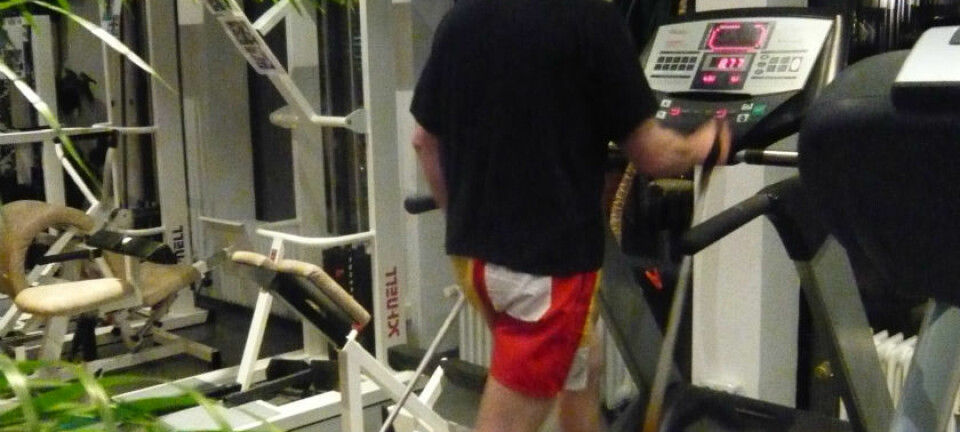
Interval training also benefits trained athletes
Less, but more intense exercise has great health and fitness benefits for untrained and moderately trained people. New research shows that this also applies to trained athletes.
Shorter and fewer sessions with a higher intensity. That’s the idea behind interval training, which is currently getting a lot of attention from casual exercisers and professional athletes alike.
Researchers are also showing an increasing interest in interval training. At Copenhagen University, sports scientist Thomas P. Gunnarsson has just defended his PhD thesis, which looks into how interval training affects fit people.
And the results speak for themselves: the participants in the study experienced significant fitness improvements by upping the intensity of their workout. This applied to both high-intensity athletes like footballers and endurance athletes such as runners and cyclists.
Seventy percent less exercise paid off
Gunnarsson’s thesis is based on four studies, two of which we’ll go into detail with here:
It’s common for soccer players to have a slump in performance over the season. So it’s a pretty significant result that we can improve their performance mid-season.
Thomas P. Gunnarsson
The first one examines how trained cyclists respond to workouts with a significant reduction in volume and a significant increase in intensity.
”All the participating cyclists have trained for years and have an above-average fitness rating of around 60. They typically trained four to six times a week and cycled an average of 211 kilometres per week,” says Gunnarsson.
In the experiment with the cyclists, their usual training volume was reduced by 70 percent over a seven-week period, so instead of riding 211 kilometres, they did 65 kilometres spread over four sessions.
All the long and moderate rides were replaced with 40-second intervals done in uphill sprints, 2-3 times a week, along with 3-4 minute intervals once or twice a week.
Trained athletes saw great improvements
But even though both soccer players and cyclists are used to high-intensity work, we can still improve their performance with intervals. So the body’s adaption to new training methods doesn’t explain the full effect.
Thomas P. Gunnarsson
”In the shortest intervals, the participants must hit max on the intensity scale, while in the 3-4 minute intervals they should aim for 90-95 of the maximum heart rate,” he explains.
The cyclists experienced improvements in sprinting and time trials, and they also increased their oxygen uptake. They improved, on average, by three to four percent.
”This may not sound like much,” says the researcher, “But when the participants are as fit as they were before the study, that really is a lot. If, for instance, a ten-kilometre runner improves by three percent, it would amount to shaving off a minute of the total time.”
Mid-season improvements for footballers
The second study examined how interval training affects a team of second-division soccer players, who train and play matches five times a week.
In this study the researchers did not reduce the training volume, but were allowed to meddle in their training mid-season.
”We first tested the players before the start of the season. During the first four weeks of the season they trained as they normally would, and then we tested them again. This enabled us to see how their regular training affected their football-specific form. After four weeks of regular training we observed no improvements in their football-specific form,” he says.
“We tested them with a so-called Yo-Yo test, also known as a bleep test, and we saw that they ran exactly as far before the start of the season as they did after four weeks of their regular training. We then added six to nine 30-second sprint intervals with three-minute breaks to their training in the remaining five weeks of the season.”
After five weeks they were tested again. On average, their Yo-Yo test scores had improved by more than ten percent.
”Seven of the players were biopsied and took treadmill tests, and we saw that their running economy had improved after five weeks. In other words, they needed less oxygen to run at the same speed after five weeks of interval training.
“It’s common for soccer players to have a slump in performance over the season. So it’s a pretty significant result that we can improve their performance mid-season.”
Why does interval training work?
The researchers cannot yet say with certainty why intervals make such a great difference, even for trained athletes. But part of the explanation probably has something to do with the positive effects of changing the training methods:
“I tend to use a certain Einstein quote when I present my research: ‘Insanity is doing the same thing and expecting a different result’. The body adapts to training, and if you add something new, the body will adapt to it,” says Gunnarsson.
”But even though both soccer players and cyclists are used to high-intensity work, we can still improve their performance with intervals. So the body’s adaption to new training methods doesn’t explain the full effect.”
Many unanswered questions remain
Scientists still have a lot to learn about interval training, and Gunnarson and his colleagues at the Department of Exercise and Sport Sciences at Copenhagen will continue to look for answers:
“What I can say for now is that the effect of doing this is significant, but there’s still a lot we don’t know.”
The thesis also includes the much-publicised 10-20-30 study of runners, which you can read about here.
The fourth study examines how diet affects soccer players’ resiliency after matches.
-------------------------------------
Read the Danish version of this article at videnskab.dk
Translated by: Dann Vinther















